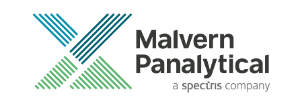Malvern is demonstrating its new nanoparticle characterization platform NanoSight NS300 at a live launch this month.
Are you involved in characterising the size and concentration of nanoparticles, including exosomes and viruses? Would you like to generate more NanoSight data but not have time to sit at the NS300? Would you like to fully automate sample delivery, along with having the full flexibility of measurement configuration you expect from NanoSight? Do you want to characterise larger sample sets from 96 well plates?
If the answer to any of the above questions is yes, then this NanoSight NS300 Sample Assistant Launch webinar will be of interest to you.
Taking part on 18 January between 10:30 and 11:30 (Eastern US and Canada time), the webinar will provide an overview of the NanoSight Sample Assistant autosampler hardware and software, from system set-up and method generation, to data output and system shutdown. Examples of the types of data that can be generated will also be shared.
Speaker Pauline Carnell is product manager of bioparticle characterisation at Malvern Panalytical. She studied pharmacology at the University of Liverpool and has more than 20 years’ experience of pharmaceutical research, having worked at Warner Lambert and Pfizer developing and running assays for G protein-coupled receptors, ion channels, antibodies and proteins.
Prior to joining Malvern Panalytical, Pauline spent two years with an EU biotech company, working on protein-conjugated gold nanoparticles. Her current areas of interest include drug delivery systems, protein aggregation, extracellular vesicles and fluorescence applications.
Who should attend?
Academic and industrial researchers involved in characterising larger sample sets, and those who would like to reduce hands-on instrument time, will find interest in the webinar, as well as those who are interested in analysing more samples in a quicker, more reproducible way.

